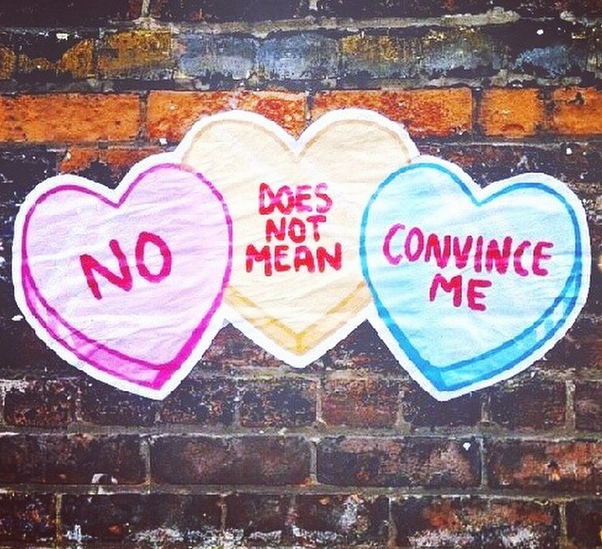 It’s absolutely common knowledge that there’s a lot of sexism in the advertising industry. If you’ve seen one of the many ads for clothing, alcohol, or perfume in the past decade, you know that the female body is constantly objectified. Whether it’s a woman’s lips, legs, breasts, or butt, the female body is used to sell pretty much anything- even things that aren’t made for women.
It’s absolutely common knowledge that there’s a lot of sexism in the advertising industry. If you’ve seen one of the many ads for clothing, alcohol, or perfume in the past decade, you know that the female body is constantly objectified. Whether it’s a woman’s lips, legs, breasts, or butt, the female body is used to sell pretty much anything- even things that aren’t made for women.
Suitsupply, a men’s clothing company, has recently released a Spring/Summer photo campaign highlighting their new products for the fashion season. Although, interestingly enough, Suitsupply’s clothing is not necessarily the focus of this ad campaign. When visitors approach the Suitsupply Site, they are greeted by a homepage filled with male models dressed in suits, sports jackets, blazers, and sweaters. Even though Suitsupply’s main page seems harmless enough, all a visitor has to do is scroll down to click on the small window that says “Spring/Summer 2014 Campaign”.
Upon clicking, the website redirects to the campaign’s home page. From there, the visitor is presented with a viewing option. Before showing the campaign in it’s entirety, the page prompts the viewer with a simple question- asking if they would prefer to view the censored or the uncensored version of the campaign. The censored version shows male models, donning the newest styles in suits, surrounded by female models in bikinis. The male model, typically in the center of the photo, is fully clothed while the countless women around him barely have any clothing on at all. Just in case the campaign wasn’t already sounding ridiculous, all of the female models are soaking wet.
Although the censored version of the campaign already adds to a collection of insulting, objectifying advertisements, the uncensored version takes the insanity to a new level. In the uncensored version, all of the women are topless and, you guessed it, still soaking wet. This kind of advertising is definitely not uncommon, but certainly raises some interesting questions. Are the suits any less attractive without the half nude models around them? Do the suits do any less of their suit duties because they aren’t surrounded by beautiful women? Do the suits have magic powers that lure bikini-clad, dripping wet women to the man wearing them? Now, correct me if I’m wrong, but beautiful nude women will definitely not flock to you, nor follow you around all day simply because you are wearing a Suitsupply suit.
However, this isn’t the first time that Suitsupply has been the subject of scrutiny because of their advertisements. Suitsupply has had a lot of provocative ads in their past: ads that show men looking up women’s skirts, women wearing only body paint, and, a personal favorite, a man in a suit sandwiched between two nude, female back sides. Even though these kinds of ads are absolutely drawing attention to Suitsupply, it seems ridiculous that having nude females in provocative ads is the primary way of attracting customers- is the product simply not enough? What’s even more ridiculous is that men are never the sex symbol in advertisements. If roles were reversed and it was males being stripped down to sell skirt suits or dresses, people would laugh. So, if that’s the case, why is objectifying women socially acceptable?
Advertisements have been objectifying women for decades, but the way that women are being shown in the media is out of hand. A female’s identity shouldn’t be limited to her body and there is more to a woman than just her legs. Media portrayal of women must improve so that women and men are represented equally and with respect. Sex sells, but unfortunately so does sexism and that’s something that needs to change.







Dave • Aug 12, 2015 at 2:18 pm
I realize this is a year old post but I feel compelled to weigh in, and who knows, maybe your account is still active and you’ll actually read this. If I’ve correctly analyzed your comments, you are male. For what it’s worth, I am also male, but then again you easily deduced that based on my name and photo. I don’t feel the need to hide behind anonymity. That said, would you be willing to let me give you some advice on your approach? I’m assuming you nodded just now, so here we go…
When a woman takes time to carefully articulate her thoughts on a subject, assume those thoughts are important to her. The weight of that importance increases when you add extensive research and some experience with the subject. No matter how “one-sided” you feel the presented material is, an article/blog like this is obviously the fruit of someone’s labor and not just a passing rant. And just to make sure your sensitive maleness isn’t offended again, I will say that this concept is not gender specific. In other words, yes, men can care passionately about what they write too. But anyway, back to my advice…
Never use name calling as a conversational strategy. It’s just poor form and can instantly earn you a dismissal in the mind of the individual you’re trying to engage in conversation. But maybe you weren’t trying to have an actual conversation. Not only did you employ the classic toddler-style tactic of name calling, you took it to the next level bro. “Cunt” is possibly the most derogatory, insulting, and degrading words thrown around these days. It’s vile. Think about a woman in your life that you care deeply about – perhaps your mother, sister, girlfriend, wife… How would you feel about someone calling one of them a cunt?
Beyond that, here’s what makes your post worthy of at least a single facepalm. You were attempting to present an argument about the degradation of men, and your method involved degrading the author. Here she is, writing about the objectification of women, and you roll up in here referring to her as a dehumanized object, a body part. In the most explicit fashion. Do you not see the laughable irony in that? That’s. Just. Dumb. It actually makes YOU out to be a Now, that’s not how you want someone to think of you, is it? Perhaps try just a little bit harder next time.
Regarding your sentiment that men are exploited in a sexual manner for marketing just as much as women are… let’s say for argument’s sake that you mean 50/50. As in, it occurs equally for both males and females. If that’s truly what you think, then I LOL in your general direction and regret to inform you that you are just flat out wrong. You should check out some actual research. Like the seejane.org site the author mentioned. Or you could do your own research. It’s super easy. The next time you’re walking through your local mall, keep a tally of the images used in sexually charged advertising. Not just any advertising, we’re specifically talking about the kind that uses sex or sexiness to sell a product or service. If the mall is not a feasible option, you can do a similar experiment from the comfort of your own home with TV commercials! Now count up the number of these types of images that are female, and those that are male. I’ll bet you’ll find the ratio is more like 80/20, female/male. It’s even higher if you only look at products being marketed to men. This is one of the points the author was trying to make. Women’s body parts are commoditized and the humanity of the female pictured is stripped away (pun intended). Just because she didn’t talk about the male side of sexual marketing doesn’t mean she’s wrong about the female side. No it is not equal. Not even close. It’s time to put the shoe on the other foot and go for a stroll.
Good day!
Oh, and keep up the good work Madeline.